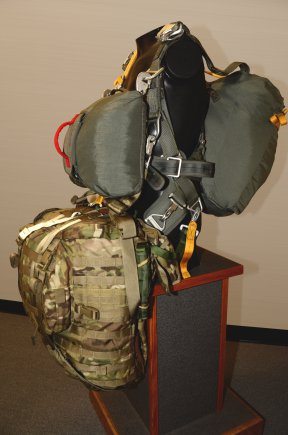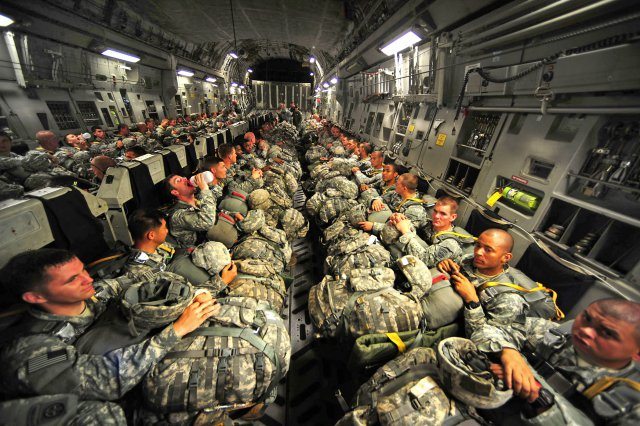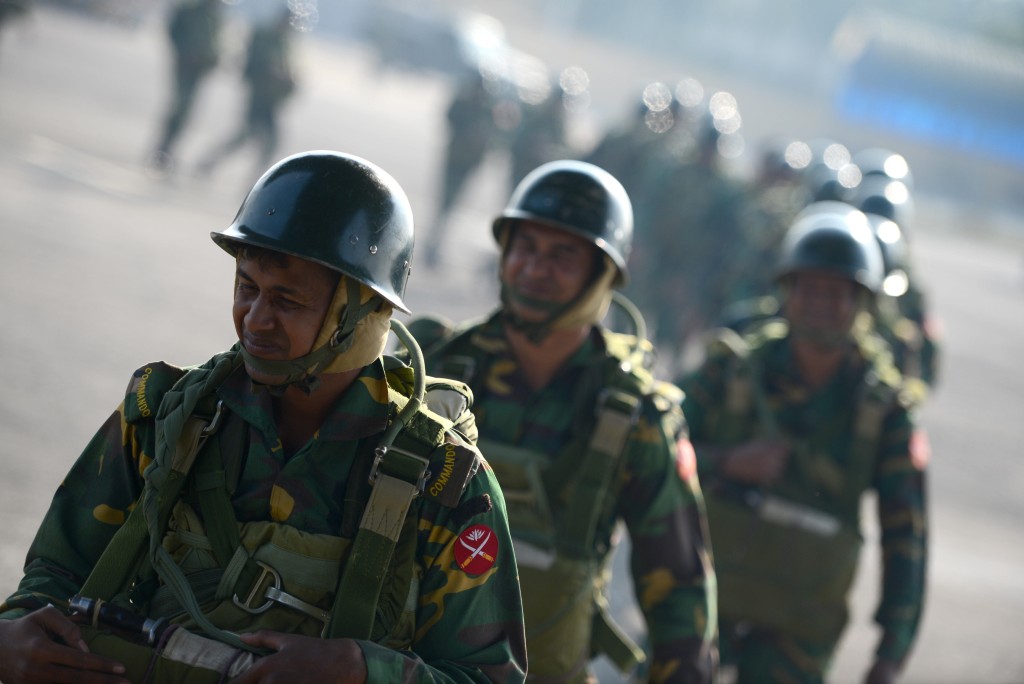He used to be one of them, so when paratroopers from the 82nd Airborne Division asked Rich Landry to design a rucksack to meet their needs, he was thrilled.
“That’s my past,” Landry said. “This … is my favorite kind of work, because the whole parachute (piece) is just such an interesting dynamic when you start talking about load and how all the pieces have to work together.
“It’s a huge challenge, but when it’s a lot of fun, it’s certainly easier.”
An individual equipment designer in Load Carriage Systems, Product Manager Soldier Clothing and Individual Equipment, Natick Soldier Systems Center, Landry spends most of his time thinking about how to lighten the Soldier’s load.
“One of the things we always say is, we don’t do all the critical design work here,” Landry said. “It’s Soldiers that do that. We put it into something tangible.”
In this case, Soldiers were telling Landry that the Modular Lightweight Load-carrying Equipment, or MOLLE, large and medium rucksacks in the Army inventory were too large and small at 3,000 and 5,000 cubic inches, respectively, for their purposes.
And the MOLLEs, as well as other existing systems, had to be fitted with the current Harness, Single-Point Release, or HSPR, that wrapped around the rucksacks and secured them to the parachutes, making them difficult to pack and unpack. Soldiers also wanted a design that interfaced well with body armor and was as comfortable as possible.
“It took time to set up existing rucksacks with the HSPR,” Landry said. “So that was one of the problems that the 82nd Airborne Division had. They needed flexibility to rig, to de-rig, and to possibly reconfigure the rucksack loads at various phases before the airborne operation. The ability to reconfigure the load was critical.”

Soldiers also had asked for a permanent harness for airborne operations on the outside of the new rucksack, but Landry’s solution was a removable harness that looked permanent.
“Why should we have two to three pounds of excess equipment permanently attached on that rucksack that they’ve got to carry around with them?” Landry said. “This is so simple. It’s a (minute-long) process. Normally, when you’re rigging a rucksack with the removable standard (HSPR), it can be as long as a 10-minute process, especially when you’ve got new … paratroopers that haven’t done it before or haven’t done it very often.”
Landry said the removable system is more cost effective than a permanently sewn harness, which could add as much as $200 to the cost of a rucksack. He added that any failure in either the pack or the harness would leave the other reusable, avoiding replacement of the entire $400 system.
The MOLLE 4000 tested well, but Soldiers recommended a few more modifications, such as a stronger carry strap, side compression straps and — most importantly — a flap closure on top to replace the original zip closure. The flap will allow for load flexibility when necessary and be more durable when released and lowered to the bottom of a 15-foot lowering line during a jump.
“We got it right (as) to what their concept was, but then we learned in the technical testing that we needed to change the design slightly,” Landry said. “We all learned something, and that’s fine. That’s what you want. That’s why you test.”
The current version will go into safety certification testing during March and be operationally tested in late spring at Fort Bragg, North Carolina. Upon completion of a yearlong user assessment, airborne units could receive their first MOLLE 4000s before fiscal year 2017.
The final product could have applications beyond airborne operations.
“This pack can be used by any unit in the Army if they’ve got a size requirement like this, and all they do is remove the harness,” Landry said. “It can be an Army common item at some point in time, and wouldn’t that be great?
“Once it gets on the ground, it must carry the load efficiently, because once a paratrooper lands, the pack’s job really begins, and the mission is to be as fast and effective as possible in the fight.”
And Landry said he hopes that others might see the utility in that.
“To have a service-common pack of this design,” Landry said, “would be really the ultimate goal.”











